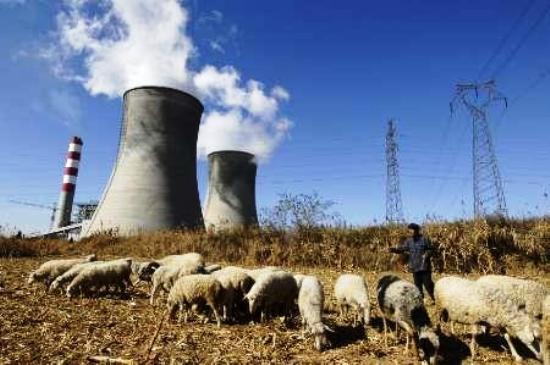China is currently the biggest polluter and largest consumer of energy in the world.
But Guangdong aims to do something about it, at least locally. By the end of this year, our province will issue the green light to a ‘cap-and-trade’ plan that will reduce emissions curb pollution.
The emissions trading scheme (ETS), as its known, will have a huge impact on companies which emit the most carbon. Those sending more than 20,000 tonnes into the air each year will be forced to join the scheme. The idea being once a company reaches its cap on carbon, it will have to go into the market to buy more credit as a penalty for polluting.
The Guangdong plan – which excludes Shenzhen as it has its own scheme in place – will target the cement, ceramics, non-ferrous metals, steel, paper-making, petrochemicals, plastics, power and textile industries.
Guangdong is not alone in trying to find ways to reduce emissions. There are six other ETS pilot programmes in place in Beijing, Shanghai, Tianjin, Chongqing, Shenzhen and Hubei province. Each is trying to work out a formula that is suitable for local conditions.
Overall the scheme is being described as commendable. Some say China is embracing a green approach in a meaningful way, which involves testing what does and doesn’t work.

British Consul-General Alastair Morgan speaking
Alastair Morgan, the British Consul General in Guangzhou, told an audience at the Consulate’s Low Carbon Week event that while pollution and other potential crises are threats, the chance to affect change is an opportunity.
Guangdong is taking a careful approach to the pilot because it does not want them to fall at the first hurdle.
By the end of 2015, the first pilot will have finished. In 2016, a four-year improvement phase will come into effect to adjust and tweak problem areas. It is hoped by 2020, a full scheme will come into operation.
Emissions trading was a big talking point at the recent Low Carbon Week. International Emissions Trading Association’s (IETA) Honorary President Henry Derwent told the audience there is nothing to fear about the upcoming scheme.
In an interview with The Nanfang, he said that an “immoveable force”, in the form of the government and the cap, will force a new economic rationale for businesses.
“It’s clearly very difficult to persuade anybody if they are a consumer whether they are domestic or a business that their costs need to rise,” he said. “I don’t think anybody’s going to love the National Development Reform Commission (NDRC) for doing this and I’m sure there will be all sorts of interesting discussions at the highest levels of the state-owned enterprises and the NDRC.”
He added: “For the moment there seems to be enough pressure to work from the NDRC to the provincial DRCs to make all the companies involved accept that they are going to have to grind their teeth and get on with it.”

IETA’s Henry Derwent talking about ETS
However, concerns are being raised over the legal framework that underpins the pilots. Shenzhen is the only one to have such a framework in place to enforce penalties for non-compliance.
Some have raised concerned about the possibility of businesses moving outside of emissions trading zones in order to avoid getting involved.
ETS has been seen as controversial in the US, Europe and Australia, with companies grappling with rising costs on top of the prospect of cap-and-trade and a slow economy.
However, Carlos Lo Wing-hung, a professor from Hong Kong Polytechnic University and a specialist in environmental management, believes the current government oversight of state-owned enterprises causes a conflict of interest.
“That trading scheme is still under a very administrative-driven system, because emissions trading is more market-orientated,” he said. “A government department that administers the whole scheme is asking which enterprise which should be in the scheme and the level of reductions they should perform – it is not normally the way to go about emissions trading, from the experience of America and Europe, it is not the way they operate.”
Beijing is on a tight deadline to meet its 2020 target to cut carbon intensity. Emissions trading is only one part of that, but it’s up to the pilots to prove it can be a success.
 Shenzhen will open its emissions trading exchange to foreign investors, making it the first of its kind in China, reports China Daily.
Shenzhen will open its emissions trading exchange to foreign investors, making it the first of its kind in China, reports China Daily.











